Red-Bellied Woodpecker at Lynde Shores Conservation Area
With a gusty northwest wind blowing, Bob and I headed to Lynde Shores Conservation Area in Whitby, Ontario. We wondered if the Red-bellied Woodpecker was still lingering in the woods there, and sure enough, I heard its repeated chiff-chiff and rolling churrr before actually spotting the Woodpecker on a nearby tree.
We were pleased that the sun was shining since it served to highlight the woodpecker’s plumage to a better advantage than the previous time we had sighted this bird. In particular, the striking black-and-white zebra-like barring on the back and wings really stood out against the grey bark of the tree trunk.
Lynde Shores Conservation Area is composed of various types of terrain, but the Red-bellied Woodpecker seems to favour the forested area next to the creek and accessible to the well-stocked bird feeders. Generous donors had the trays overflowing with peanuts in the shell.
The Red-bellied Woodpecker is often mistaken for the Red-Headed Woodpecker, …
but it is the red suffusion on the belly that gives this woodpecker its name. It is hard to see in both sexes.
This broken off crag in a treetop seemed to be one of the woodpecker’s preferred perches. Perhaps he was able to lodge the peanut shell into the slits of wood where it would be held fast while the woodpecker broke it open.
Seeing as there is no water available to drink in the nearby vicinity of the woods, with the creek being aptly frozen over, the woodpecker, and other birds we sighted, turn to eating snow or melting snow for refreshment.
Numerous times, the Red-bellied woodpecker dipped his beak into the cavity and came up with his beak glistening with snow.
Take note of the woodpecker’s tongue in this picture. It is very fine.
It really surprised Bob and me as to the flexibility of the Red-bellied Woodpecker’s neck. It was capable of turning its head almost 180-degrees.
I guess the Red-bellied Woodpecker was lulled by the warm rays of the sunshine much as we tried to remain bathed in its glow to try to offset the frigid polar air. It appeared that he might have a sleep…but no. The next thing we knew, it darted away into the distance.
Frame To Frame – Bob and Jean

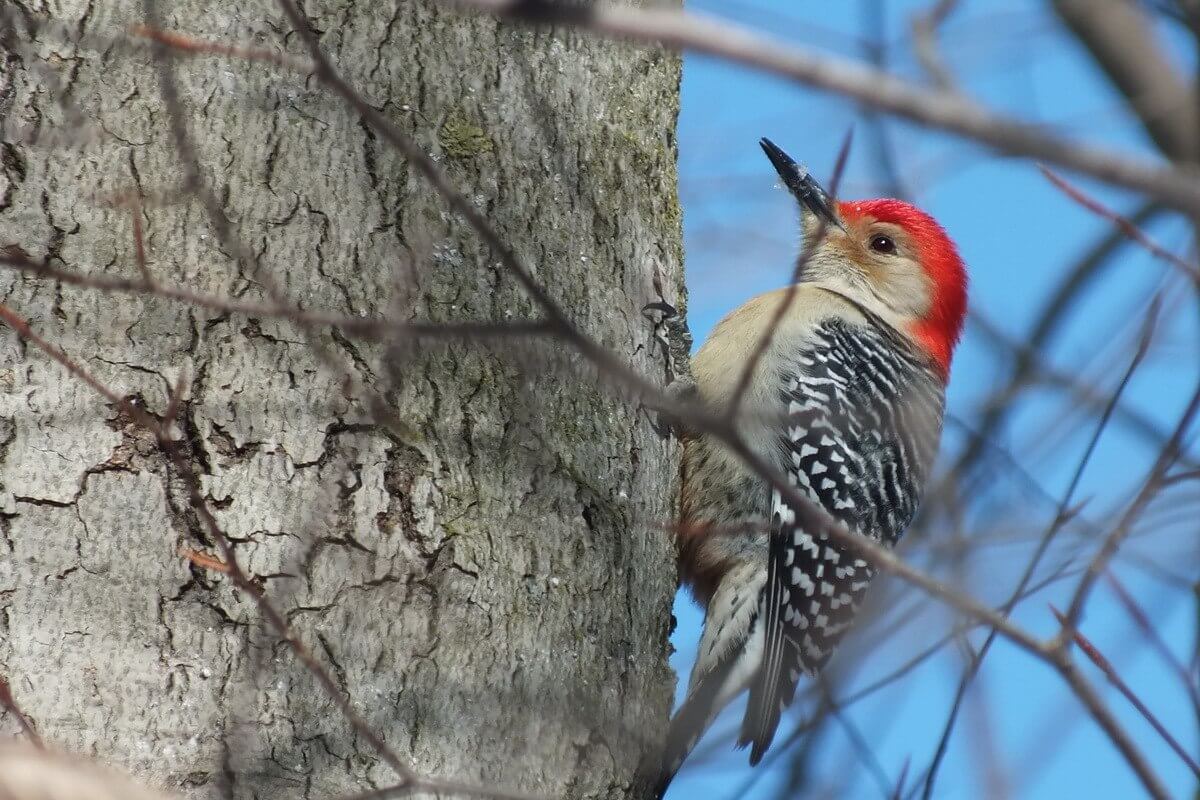

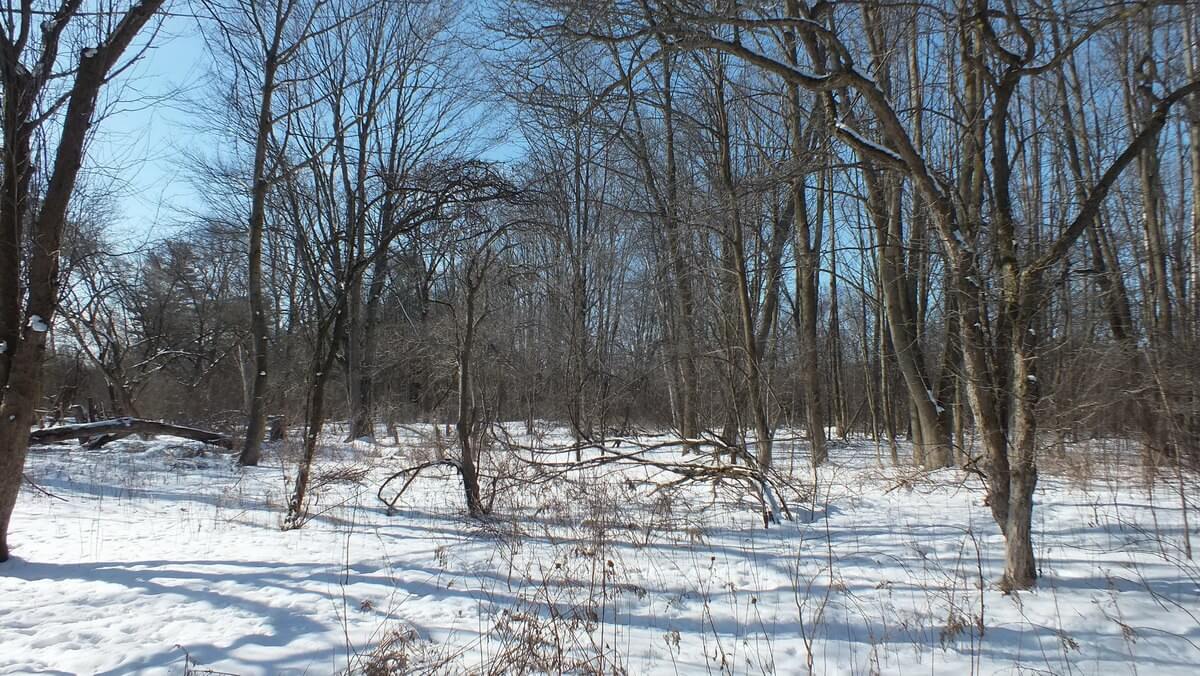





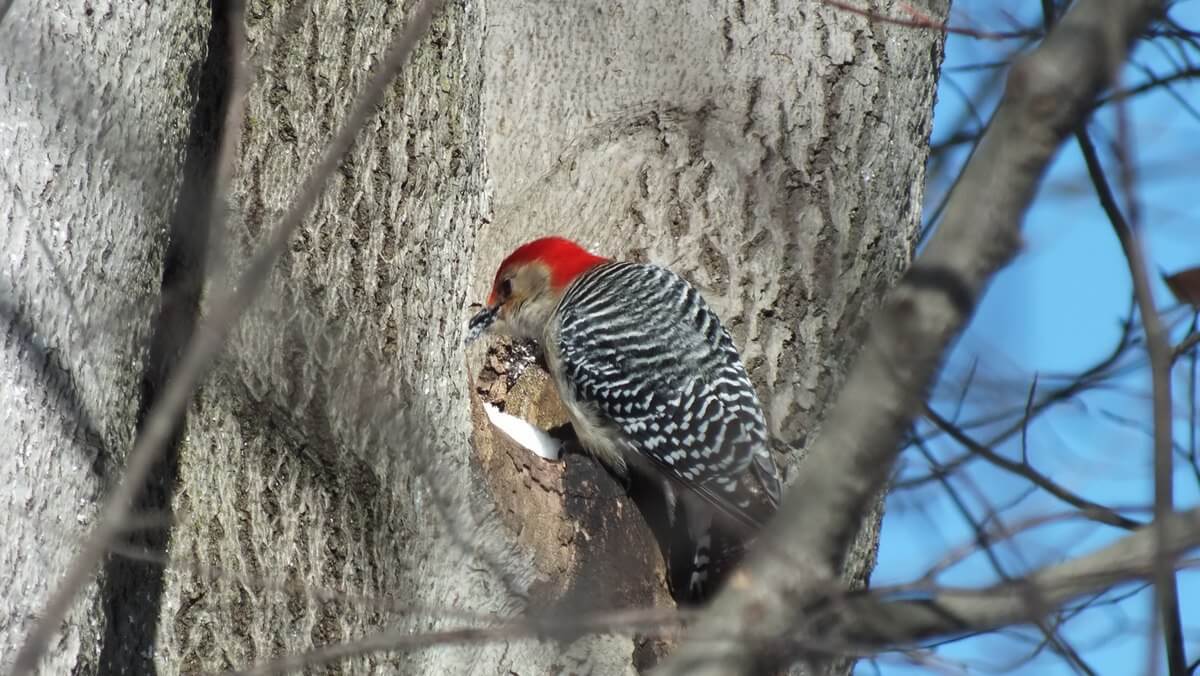

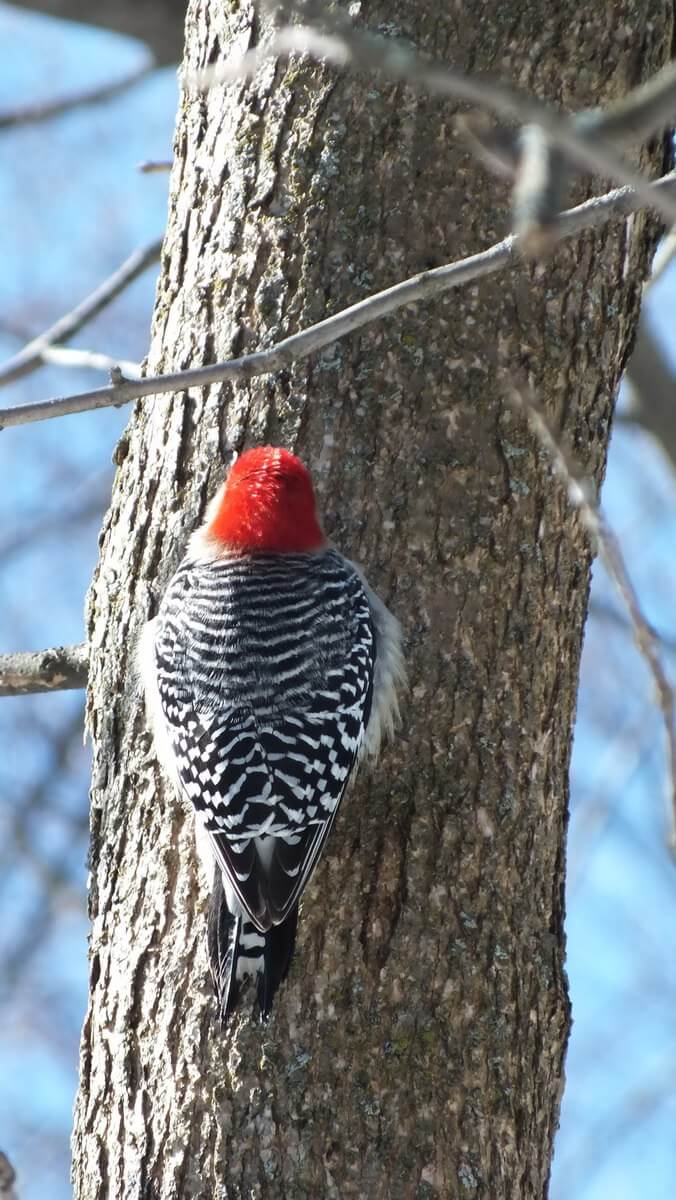


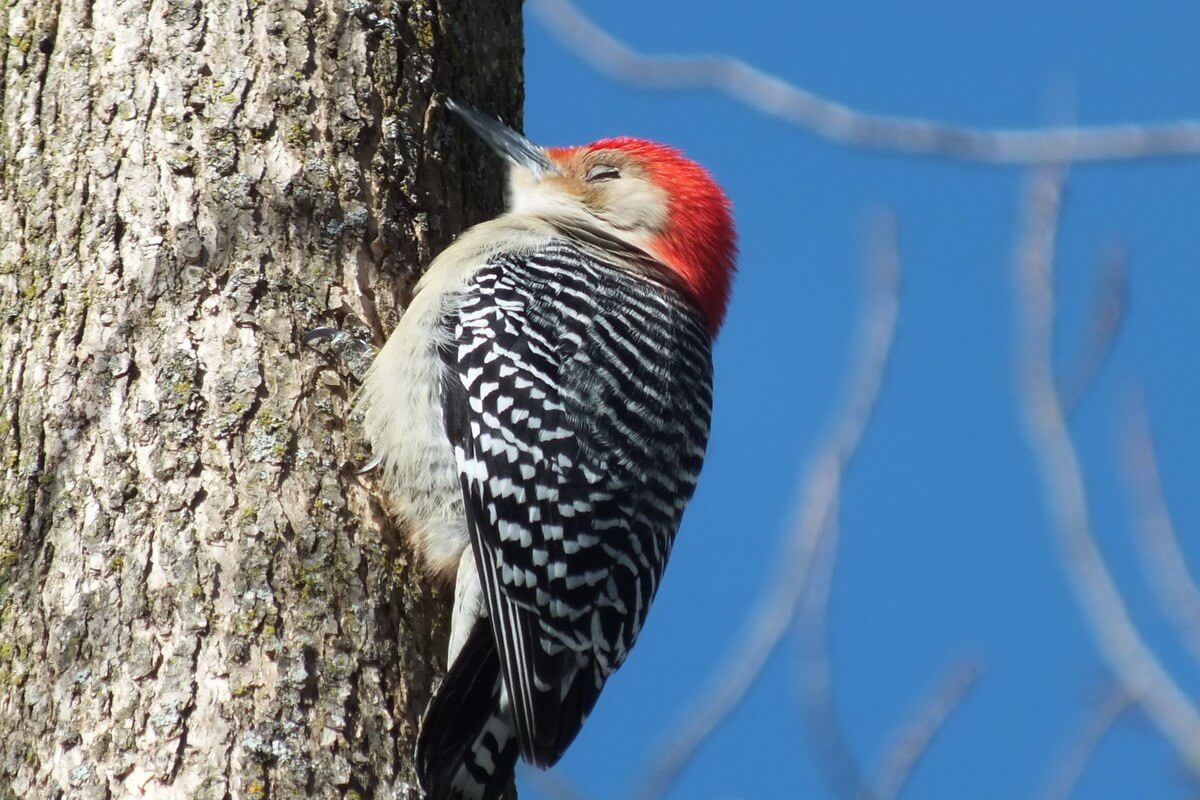
What a lovely bird – he looks like a certain David Bowie 🙂
Cheers
Scott
My husband knows what you mean, and he loves David Bowie music!
Fantastic closeups. A beautiful bird. It is very hard to see the red on the belly, so thank you for those pictures. I have noticed the juncos, chickadees, and other birds that come to my feeder, eat the snow on the tree branches. I am really enjoying your blog. Thank you.
I am so glad you are enjoying our blog. Bob and I take great pleasure in getting outdoors and discovering all the delightful birds that make their homes there.